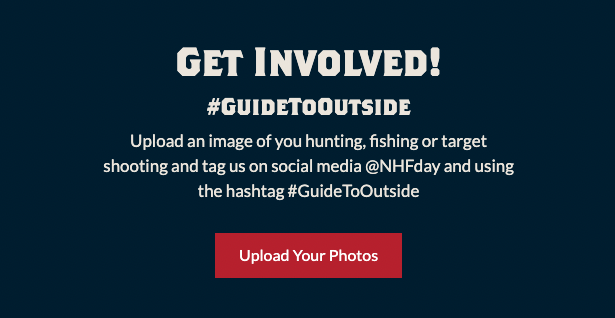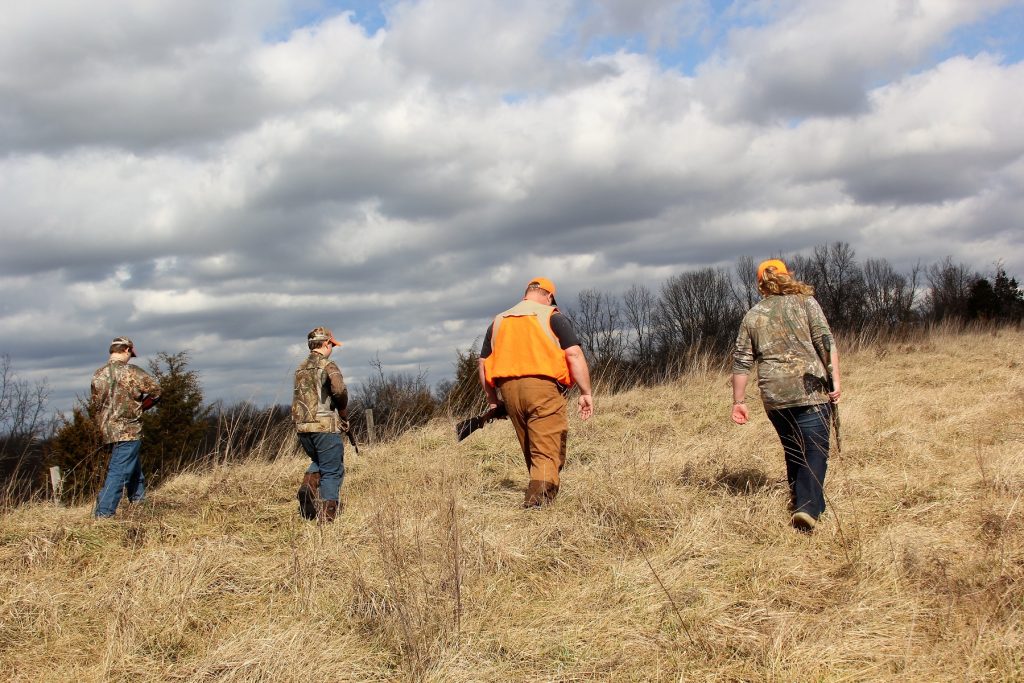
Small Game, the Traditional Gateway to Hunting
It wasn’t that long ago that it was commonplace for kids learning to hunt to do so by chasing quail, rabbits and squirrels in the woodlots and fields around their house. For a great many families, small game made up a large part of the weekly dinner menu.
Sadly, those days are mostly gone. Lack of land availability, more young hunters choosing to start with deer or other large game, increased demands on time with other sports and video screens and a more urban population have cut back on the number of hunters of any age chasing small game. And let’s face it. Small game just isn’t as sexy as deer hunting. There is no trophy record book for small game. Young hunters don’t tune in to watch their favorite outdoor television personalities chase squirrels. Fewer people enjoy a meal of rabbit and squirrel on a regular basis.
That’s a shame. Small-game hunting teaches woodsmanship, safe gun handling, accurate shooting and even dog handling. Lessons learned from small game last a lifetime and transfer over to any other kind of hunting, and the quarry here provides wonderful table fare the entire family will enjoy.
As with all forms of hunting, doing it safely is paramount. The varied situations and landscapes of small-game hunting are perfect for teaching safe hunting lessons that will guide hunters for a lifetime. Here are a few tips for making the most of every small game situation.
Matching the Firearm to the Game
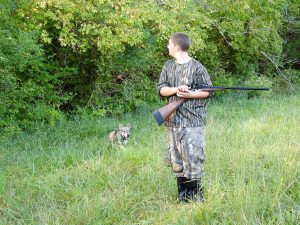
A break-action shotgun is the perfect firearm for small-game hunting. It doesn’t have the extended range of a rimfire rifle, so is generally safer in today’s smaller and more populated available hunting areas, and it is easy to load and unload when crossing fences or other obstacles.
Choose the right gun for the quarry and location. Back when most young hunters had hundreds of acres at their disposal, a .22 rifle was the squirrel and rabbit firearm of choice. Today, urban sprawl, decreased land access and more and more tightly spaced houses even in rural areas make the .22 an unsafe choice in many locales. While the bullet from a .22LR may be small, it can still carry up to a mile. The solution: For small woodlots and populated areas, stick with a shotgun to avoid hitting a distant, unseen target.
Fences to Cross
Teach safe gun handling when crossing an obstacle. Small-game hunters often find it necessary to cross a fence, ditch, downed tree or other obstacle. Make sure your young hunters follow safe gun handling techniques by unloading their firearm and, if possible, placing it on the ground on the far side of the barrier before crossing themselves.
It takes only a few seconds to load and unload a shotgun or rifle, and doing so prevents one of the most common instances of accidental shootings while hunting. Lead by example and unload your own firearm, no matter how trivial the impediment. It’s a good lesson and will stick with your young hunters when they go out on their own.
The Group Effort
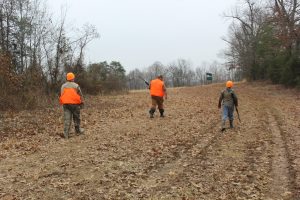
Make sure all hunters in a group hunt move at the same pace and stay in a straight line for safety. If young hunters work ahead or lag behind the rest of the line, stop the hunt and allow everyone to reposition.
Since small-game hunts are often a social affair, it’s vitally important to be aware of where everyone in the hunting party is before taking a shot. A safe hunt means everyone stays in an orderly line as you move through the cover, and shots are taken only at game out in front of the line.
Maintaining the line in a group hunt is critical for everyone in a group hunt for small game. As a mentor, you also must make sure excited young hunters don’t rush out ahead or lag behind the rest of the party. Experienced hunters develop a rhythm that keeps their hunting speed close to others in the group. New hunters lack that experience and without a watchful eye or a quiet word will often find themselves on a different pace than the group. Try to position new hunters between more experienced companions who can keep an eye on them and help keep them in line.
Four-Legged Help
Small-game hunting often includes the use of hunting dogs, especially when there’s heavy cover. Make sure anyone you’re hunting with understands they need to always be aware of the dog’s location before making a shot. Rabbit hunting with beagles often means a snap shot at scurrying game in thick brush. You must always check to make sure the dog isn’t right behind or just past the rabbit before making a shot. It isn’t the end of the world if a rabbit gets by with no shots fired, and a good hound will bring them back for another opportunity.
I See You!
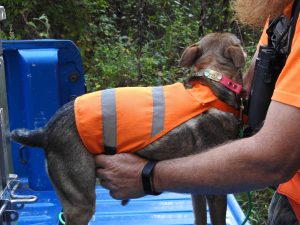
Hunter orange keeps you visible to other hunters, even in heavy cover. Don’t forget your K9 hunting companions when it comes to safety.
Wear hunter orange. No color stands out in the outdoors like hunter orange. Make sure everyone in the group wears as much orange as possible. Hats and vests make keeping up with fellow hunters easier in thick cover. And don’t forget your dogs when it comes to orange. A bright vest or collar makes picking them out as they search through tangled brush easier for everyone.
Muzzles Up
Always maintain muzzle control. Small-game hunters often find themselves picking their way through dense tangles of briars and brush. Encourage young hunters to always practice safe muzzle control as they pick their way through cover. Even experienced small-game hunters often stumble or fall as they maneuver through such tangles, so keeping your muzzle pointed skyward or down at the ground means you will be less likely to swing it toward a neighboring companion in the event of a stumble.
If a hunter does stumble, take the time to unload his or her firearm and check the muzzle to make sure it isn’t packed with snow or mud. If it is, use a stick or cleaning rod to completely clear the firearm’s bore before reloading. Firing a plugged gun will cause extreme damage to the firearm and may result in severe injuries to the hunter or anyone who happens to be nearby.
*-*-*-*-*-
Kentucky native Michael Pendley has been hunting since he was old enough to say the word “rifle.” He’s been writing in the outdoor industry for the past 15 years, and his work has appeared in Field & Stream, Sporting Classics Daily, Modern Pioneer, Petersen’s Hunting and others, though he is perhaps best known for his “Timber 2 Table” column on Realtree.com. When he’s not in the kitchen whipping up something mouthwatering or sampling Kentucky’s fine bourbons, he, along with his wife and photographer, Cheryl, their daughter, Michaela, and their two sons, Hunter and Nathaniel (aka Potroast), along with their basset hound, Blanton, and bloodhound, Teddy, can be found traveling the country and enjoying everything the outdoors has to offer.
 Excise taxes fund wildlife research for the sustainable maintenance of healthy wildlife populations.[/caption]
The excise taxes established under the Pittman-Robertson Act have been a driving force, contributing over $16.4 billion (over $25 billion adjusted for inflation) to individual states. In this video, Peter Novotny, Deputy Chief of the Ohio Division of Wildlife, highlights how these funds, combined with hunting and fishing license dollars, fund essential wildlife research. This research enables a deeper understanding of how wildlife populations adapt to a changing environment, ultimately leading to the maintenance of healthy and sustainable populations.
Excise taxes fund wildlife research for the sustainable maintenance of healthy wildlife populations.[/caption]
The excise taxes established under the Pittman-Robertson Act have been a driving force, contributing over $16.4 billion (over $25 billion adjusted for inflation) to individual states. In this video, Peter Novotny, Deputy Chief of the Ohio Division of Wildlife, highlights how these funds, combined with hunting and fishing license dollars, fund essential wildlife research. This research enables a deeper understanding of how wildlife populations adapt to a changing environment, ultimately leading to the maintenance of healthy and sustainable populations.
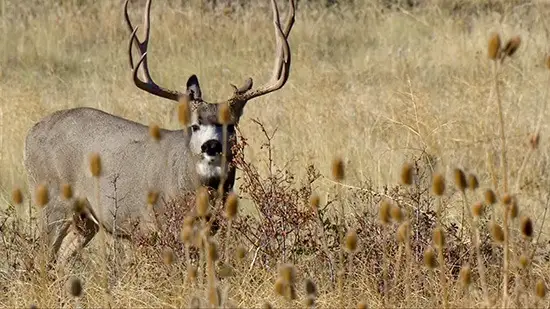 “We feel comfortable and confident that the excise tax dollars are helping keep healthy deer herds out there across the United States,” said Phil Bednar, President and CEO of TenPoint Crossbows.[/caption]
“We feel comfortable and confident that the excise tax dollars are helping keep healthy deer herds out there across the United States,” said Phil Bednar, President and CEO of TenPoint Crossbows.[/caption]

